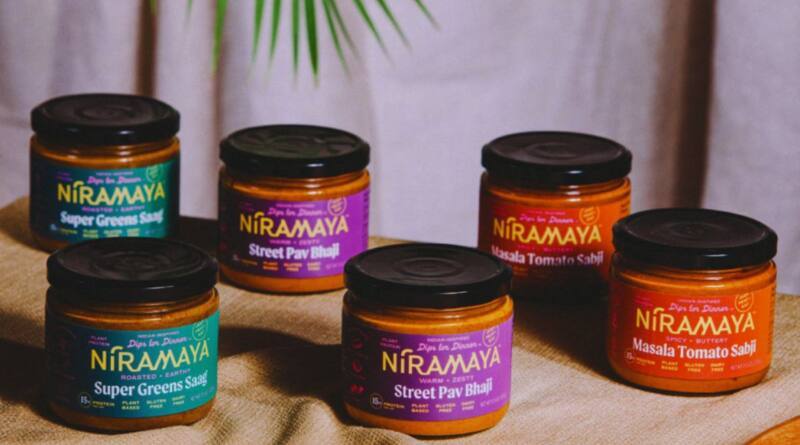Niramaya Foods Employs Dips to Deliver New Traditional Indian Innovation
“These recipes are my great-grandmothers and are rooted in Indian culture, but they are also plant-forward with functional spices and the added convenience of dip and serve,” she said. “By modern needs, I mean that when I moved to the United States, I didn’t have time to sit down and prepare full-fledged Indian meals. I was constantly on the move between colleges, universities, and jobs.

Niramaya Foods products are available in the specialty food channel through retailers such as Sprouts Farmers Market. The products are made with vegetables, spices, and cashews. The dips come in three varieties: street pav bhaji, masala tomato sabji, and super greens saag.
“We have strong attributes to make a valid case to be in two grocery store categories,” she said. “Our Indian flavours make us a perfect addition to the Indian foods aisle, whereas our scoop-and-serve dippable product makes it a perfect addition to the shelf-stable dip space.”
Khera stated that her brand considers various characteristics when it comes to its core customers.
“Rather than it being really narrow focused on something like a female consumer that’s (a) 32-year-old and works in corporate, we like to say our consumers like to shop at brands like Whole Foods,” she went on to say. “Target shoppers are also very similar to the customers we serve, primarily because they can be a family’s first choice for shopping and weekend errands. The customer prefers global and exciting flavours for mealtime or snacking, even at a slightly higher price point. I believe Target customers share our needs, but we are primarily focused on natural channels in 2024.”
Khera hoped that the dips would provide consumers with a cultural fusion.
“In Indian culture, dips are not common, but dipping is because when we eat bread, we break the bread into bite-sized pieces and dip it,” she said. “In the US, dipping is an integral part of snacking, so I found that healthy intersection where we would be able to share these flavours in a format that America is used to.”
Khera stated that while the recipes were inspired by her great-grandmother, they are common in India.
“They’re not just my family’s; every family has their own version of these recipes,” she went on to say. “These are some things that millions of Indians enjoy every day in their own homes where the mum or grandmother is cooking.”
Niramaya Foods’ go-to-market strategy is centred on identifying the intersection of heritage-inspired nutrition.
“Once we are convinced, we have found that (intersection), we will use DTC (direct-to-consumer) as a secondary channel to test out the market; for now, we are 100% focused on retail,” said Khera. “I live in New York City, so that in itself has given me the opportunity to go to a lot of events and festivals where we get a lot of feedback from them (consumers).”
Khera believes that the American consumer has lost touch with authentic Indian cuisine.
“Especially in the Midwest, where there aren’t a lot of Indian restaurants in some places and there aren’t a lot of Indian populations,” she told me. “So, while tikka masala and butter chicken are delicious, they are also the result of a fusion of British and Indian cultures, and do not represent the entirety of homestyle Indian cuisine. This is the reason the company is doing what it is doing.”
Niramaya Foods makes its products in the United States.
“We also source from local farms around our manufacturing facility, especially the West Coast,” Khera told me.
Khera’s strategy for 2024 is to continue expanding the business rapidly.
“We are growth-focused in 2024-2025 and also set to expand into newer product lines… as well as grow our company,” she went on to say. “I’m currently a solo entrepreneur, but I’d like to have a core team at some point when that plan makes sense. I really see a larger expansion in 2025 and beyond.”




